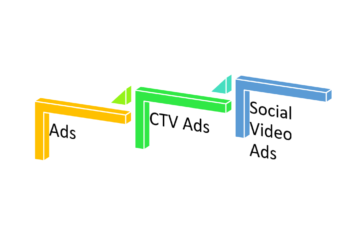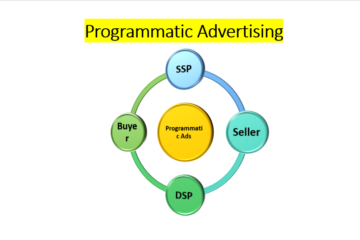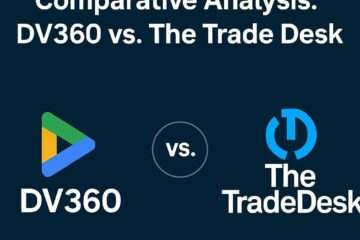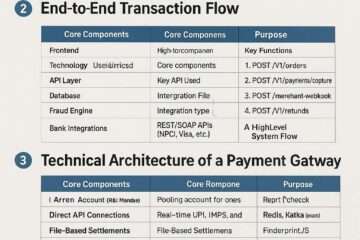

A preferred deal is a type of advertising agreement where a publisher grants exclusive access to a certain advertiser to purchase ad inventory at a fixed price before it becomes available to other buyers in the open market.
Preferred deals, also known as programmatic not-guaranteed, relate to programmatic direct agreements in which publishers sell high-quality content to a specific advertiser for a pre-established fixed cost per thousand impressions (CPM) following negotiations.
Unlike programmatic advertising, the inventories in this context are not pre-allocated exclusively for individual advertisers. The advertisers can inspect the inventories and subsequently determine whether or not to make a purchase.
How Do Preferential Deals Operate?
Programmatic Direct is a common channel for selling premium inventories, or listings with high viewability and click-through rates (Programmatic guaranteed or preferred deals).
As a publisher, you have the option of inviting your top bidders to the auction, or the advertisers may get in touch with you to take part in the sale. Both parties will begin negotiating the campaign parameters in accordance with the line item in either of the two scenarios.
Once the order conditions have been agreed upon by both parties, the deal is concluded. The ad is then rendered on your website by the Ad Manager. During the negotiation process, the advertiser is under no obligation to purchase the inventory.
The specified ad space will be put up for either a private or public auction if the advertiser does not place a bid higher than the agreed-upon CPM price.
Additionally, you can bargain for the best deals with different advertisers as a publisher.
Private Auctions vs. Preferred Deals (PMPS)
Exclusive Sales: These auctions aren’t accessible to everyone, as the name implies. Private auctions, as contrast to open auctions, are invitation-only events in which only advertisers who have been invited to participate in the bidding process. Setting the minimum floor price and deciding who gets to bid on which advertisement to display are the only differences between the bidding procedure and open auctions.
Preferred Deals: Invite-only (chosen) marketers are able to engage here, just as they may in Private Auctions (Private Marketplaces). However, the inventories are directly negotiated. An auction is not taking place.
Nevertheless, the advertisement is shown utilizing programmatic technologies after the deal is finalized.
Bonus point: Programmatic Guaranteed: The assurance of impressions is the primary distinction between Guaranteed and favored agreements. As a publisher, you promise an advertiser a certain quantity of inventory at a predetermined cost. The “guarantee” is crucial in this case, both in terms of the amount of ad impressions and the cost.
Similar to Preferred Deals, inventory are negotiated as opposed to put up for auction. Thus, as a publisher, you may offer your chosen advertising fixed or guaranteed ad impressions here. After the deal closes, the advertisement is served programmatically.
Why Should Publishers Accept Preferred Deals?
Establishing preferred deals offers publishers several benefits.
Premium pricing: The premium price is what you can charge for premium inventory. The advertiser is willing to pay the predetermined CPM for inventory after the first view.
Transparency and control: You have excellent transparency over the entire agreement, including the negotiating process, and you have control over the parameters of the order. You are aware of who is running advertisements on your website, what the ads are about, and how well the campaign is doing.
Maximum yield: Because you have premium inventory available, advertisers are willing to pay a premium for a first impression. You can optimize the yield and receive high CPMs.
For example, Kijiji, a well-known online marketplace in Canada, leads the market in recommended deals. They experienced an 80% boost in the viewability of preferred deal advertising when they transitioned from open auctions to preferred deals in the ratio of 70:30 to 30:70 between Q1 2019 and Q3 2020. Revenue from programmatic deals has increased significantly by 138% year over year. Preferred deals accounted for 25% of their business income by the end of 2020.
Brand safety: The ad’s quality and brand safety are guaranteed because you know who you deal with and purchase advertisements from. Quality traffic will enhance ad performance with dependable ads and ad placement.
How Can Preferred Deals Be Set Up in GAM?
You need to have access to GAM in order to set up the desired agreement and take advantage of all of its features.
Go into your GAM, select Admin>Global settings>Features, and turn on Programmatic Direct. Then, to set up preferred deals, take the actions listed below:
Click on Create Proposal under Sales.
Add line item* for the proposal. Select non-guaranteed line items for bargains that are desirable.
Choose “Line item type” as the preferred deal type.
To obtain the preferred advertisement creative, select the “Expected Creative.” Use interstitial sizes, for example, for interstitials that appear on the application.
Make sure you enter a “Estimated quantity” in the “Delivery Settings” area that accurately reflects the time you anticipate receiving the item. Later on, this number will be useful for monitoring and resolving any campaign-related problems.
Once a proposal has been created, you can email it to potential purchasers to begin negotiations.
Send the buyer an acceptance request once the purchase has been finalized.
Send the proposal for review if the terms of the transaction don’t satisfy you, then continue negotiating until you achieve your desired outcome.
- In GAM, proposal line items and delivery line items are comparable. They contain delivery information such as start and end timings, quantity or aim of impressions, targeting, etc.
How do you draft proposals for transactions you’d like to pursue?
A proposal includes all the required campaign material and serves as a negotiation tool. The following is a list of steps to creating a proper proposal:
Select New Proposal under Sales > Proposal.
Post a message at the top of the profile so the buyer may see it.
Put the proposal’s name here. Make it descriptive and adhere to your entity’s naming guidelines.
Include the advertiser.
*Companies that you manage ad campaigns for are known as advertisers in the Ad Manager. Conversely, the party with whom you negotiate is the buyer. Once you send the deal for the first time, the advertiser you have chosen is set and cannot be altered.
- Choose the buyer to deal with, the buyer representing the demand-side platform who is not affiliated with the ad management. Before sending proposals, you can choose buyers and change purchasers at any time. However, you cannot alter the proposal once it has been sent.
Include seller connections. The contact details of the individuals representing you in the negotiation and finalization of the contract.
Add Assignees to your entity if there is someone or a group in charge of the proposal.
You can add details like agencies, currencies, and internal notes under Additional Settings. All of the terms and conditions that both you and your buyer must adhere to and obey can be entered into the custom area. After the sale is finalized, you and the buyer can even decide to postpone delivery by using the “Delivery Pausing” option.
Click Save when you’re done.
The negotiation process begins when you create a proposal and deliver it to the buyers you are interested in. Ad Manager manages the campaign after you and your buyer have decided on the parameters of the deal.
How Are Preferred Deals Negotiated?
The negotiating tool that you develop with the campaign’s specifications is a proposition. Preferred deals are typically managed by phone calls or emails between the parties. You can begin negotiating in Ad Manager after you have a conversation with the customer. The detailed procedure is provided below.
By drafting a proposal in Ad Manager and sending it to the other party’s Ad Manager Network, you or your buyer can initiate a discussion.
You and your buyer have the ability to change the proposal. Until both parties are happy with the campaign parameters, the seller and the buyer will exchange it back and forth.
Send the acceptance request as soon as you decide the proposal is one you can accept. You are prepared to close the sale when you submit the acceptance request.
The proposal is sold and completed when the customer on the other end accepts the order.
- The Ad Manager prepares the appropriate line item and delivery order following contract finalization. Orders and line items are utilized for delivery; proposals and proposal line items are used for discussions. Only after the buyer and seller approve and complete the transaction does Ad Manager generate and update the order and line item. During the negotiation, you have two choices for reserving or ending the proposal:
Throughout the negotiation process, you can reserve goods for the buyer at any moment while also investigating the buyer’s security features.
While negotiating, you might also decide not to make a reservation. Once the profile is complete, the Ad Manager will immediately reserve that inventory for the customer.
During the negotiation period or while you are waiting for a response to your request for acceptance, you have the option to end the negotiation. After the contract is finalized, the negotiation cannot be ended.
Following finalization, you can either halt and resume the delivery, or you can make more modifications to the proposal.
Tips to Boost the Effectiveness of Preferred Deals
Creating proposals and negotiating are essential components in securing preferred deals. There are ways to enhance the proposal and negotiation process to achieve successful deals. Here are the following:
Setting a competitive and fair price for your inventory is crucial. It should accurately represent the current market value and demand. It is important to carefully consider the price you set, ensuring it reflects the value you can obtain in the open auction. It’s important to consider seasonality when setting the CPM. It’s generally recommended to keep the CPM lower in Q1 and higher in Q4.
When it comes to ad inventory, it’s important to carefully choose the perfect ad space within your inventory for those preferred deals. The space needs to be top-notch and should perfectly align with the advertiser’s campaign objectives and target audience.
Contextual targeting allows advertisers to strategically choose ad space that effectively connects with their target audience. If you choose to share your first-party data with advertisers, they can then serve ads to their intended audience. You can expect to see significant increases in impressions and revenue generated from ads. Additionally, it is important to only share data with buyers who have been verified and are trustworthy.
Proposal line item: This line item provides the campaign details, including how the site will showcase the buyer’s ad. Ensure careful creation to align with advertiser needs, including ad types, formats, slots, impressions, target audience reach, and utilization of first-party data.
To successfully close deals with a high CPM, it is crucial to closely monitor and fine-tune these four factors. In addition, it is important to maintain a high level of transparency with buyers after delivering ads. Provide regular updates on changes in ad inventory pricing and reports on ad performance.
When Preferred Deals Are Not a Good Fit?
Preferred deals may not be suitable for all individuals. The publisher aims to generate revenue from the website and optimize its profitability. When it comes to making a decision, it’s important for publishers of all sizes to carefully assess their requirements before selecting a deal.
Scenario 1: You are a prominent publisher with lucrative partnerships. So, it seems you’re involved in a favorable agreement. Your core web vitals are highly desirable for advertisers.
When participating in the preferred deal, you can enjoy a guaranteed CPM for your inventory. Is it comparable to the CPM you receive in the open market? Furthermore, there is no assurance that the buyer will ultimately close the deal following the negotiation process.
In the event that your buyer decides to end the negotiation, the ad space will then be made available for an open auction. When ad space is shifted from preferred deals to open auctions, it will result in decreased CPMs and volume.
Consider placing your inventory in a marketplace that can generate higher returns for you. Select deals based on your risk tolerance and priorities.
Brand safety is another important factor to consider. Understanding the buyer’s values is crucial in determining if they align with your own. It is important to avoid making profitable agreements that sacrifice the value of your website. It won’t provide long-term benefits.
It is important to note that when selecting a marketplace, it is crucial to prioritize your needs rather than solely relying on preferred deals. If the preferred deal offers you the highest ad revenue and ensures brand safety, it would be a good choice.
If you’re a medium or small publisher who creates top-notch content for a specific audience, but struggles with low traffic, this case is for you.
Preferred deals are typically inaccessible to small or medium publishers, as they are primarily reserved for larger teams. Even if your content is exceptional, the buyer will choose the website with higher traffic over yours.
Occasionally, a buyer may approach you directly for exclusive deals after carefully evaluating your high-quality content and a select group of valuable users. There are additional concerns that arise, such as uncertainty about the identity of the advertisers and the safety of their ads. Most importantly, you may be unfamiliar with the art of negotiating with them or accurately assessing the worth of your premium ad space.
If you’re looking to connect with top programmatic monetization partners online, Automatad is a great option to help you set up the deal. They ensure the buyer’s reliability, giving you peace of mind regarding the safety of ads and the presence of inappropriate content. They handle the negotiation and finalization of the deal on your behalf.
Additionally, the deals that come your way will only require the specific ad space from your inventory. For the remainder, it must be placed in the open marketplace.
Conclusion
If you have excellent deals and possess expertise in negotiating and verifying advertisers, preferred deals can be a valuable tool for maximizing ad revenue. Google Ad Manager is an excellent platform for conducting preferred deals.
Similar to the benefits, preferred deals also come with some disadvantages, including rigid agreements and a fixed period of inventory commitment. As a publisher, it’s important to carefully analyze and select the most advantageous deals for your inventory in order to maximize your results.



























































